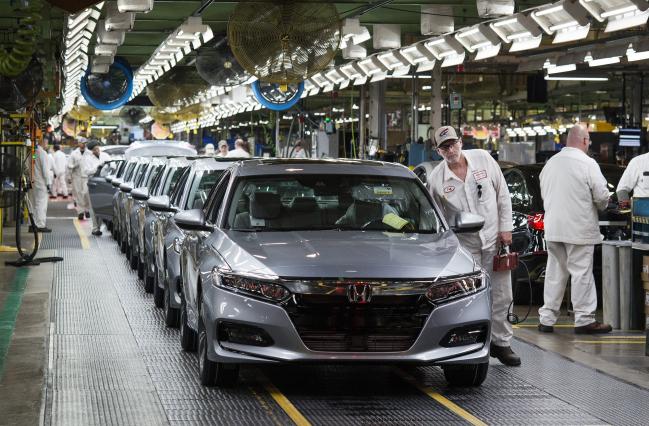(Bloomberg) -- The Trump administration has softened a key Nafta demand for more North American content in car manufacturing -- a potential olive branch on arguably the biggest sticking point as the U.S. pushes to reach a stopgap deal this month, according to three people familiar with the talks.
The U.S. proposal would distinguish between different Nafta car parts by grouping them into five categories, some of which would have a lower requirement for North American content or none at all, said the people, who spoke on condition of anonymity because they’re not authorized to discuss the negotiations publicly.
While the U.S. had been pushing for 85 percent of all vehicles to be sourced from the three Nafta countries, its latest proposal would apply that threshold to major components such as transmissions and engines but not to the simplest inputs like nuts and bolts, the people said.
Although it’s less arduous than the original demand, automakers would still be hard-pressed to hit the 85 percent threshold on critical parts, and no agreement has been reached. Nafta currently requires a typical vehicle to have 62.5 percent North American content in order to benefit from tariff exemptions.
The new U.S. proposal comes as President Donald Trump -- facing a mounting tariff spat with China -- takes a sunnier approach to Nafta talks and pushes to announce a deal in principle next week. The Mexican peso and Canadian dollar both appreciated as the news boosted expectations for a Nafta agreement. The Mexico peso was up 0.7 percent to 18.0988 per dollar at 3:52 p.m. New York time and the loonie was 0.3 percent higher at C$1.277.
The three nations, however, remain far apart on several issues and time is running out quickly, or may already have, to pass a deal before Mexican and U.S. elections.
‘Lots of Issues’
“I don’t know what an agreement in principle looks like, really,” David MacNaughton, Canada’s ambassador to the U.S., told reporters Wednesday in Toronto. “There’s still lots of issues. There’s differences of opinion and we’re going to work hard to try and narrow down the gaps and get to as much of an agreement as we possibly can."
U.S. Trade Representative Robert Lighthizer’s office declined to immediately comment, as did the press office for Mexican Economy Minister Ildefonso Guajardo and a spokesman for Canadian Foreign Minister Chrystia Freeland.
Freeland said Wednesday during a speech there’s been “promising” progress on the auto issue. “We’re making good progress” in Nafta talks overall, she said in a speech in Winnipeg. “Having said that, we’re not there yet.”
Click Here to Read Why Trump Is Hurrying for a Nafta Deal
One problem with the new plan is that no cars currently made in North America would meet the proposed requirement for 85 percent of major components to come from the region, according to one of the people. Some automakers would have particular trouble meeting the threshold because they typically build major components overseas and assemble them in North America, the person said.
Talks over autos have shifted to whether higher wages, research and development could be included in the calculation of a vehicle’s value, to encourage more of that work to be done in higher-wage economies like the U.S. and Canada.
(Updates with currency movement in fifth paragraph.)
